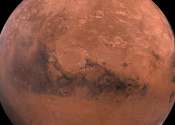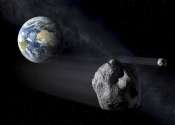New satellite aims to show how AI advances Earth observation
Artificial intelligence technologies have achieved remarkable successes and continue to show their value as backbones in scientific research and real-world applications.

Artificial intelligence technologies have achieved remarkable successes and continue to show their value as backbones in scientific research and real-world applications.
Planetary Sciences
Jul 2, 2024
0
15

When astronauts land on Mars someday, they might have to live in lava caves or lava tubes to survive the harsh radiation that rains down on the Martian surface every second. But which caves could offer them the best chance ...
Space Exploration
Jul 1, 2024
0
2

Imagine opening a time capsule, hoping to learn about the ancient past. Except, instead of a box or a chest, it's an asteroid that could provide insights into the very dawn of life on Earth.
Planetary Sciences
Jul 1, 2024
0
26

Lunar swirls are light-colored, sinuous features on the moon's surface, bright enough to be visible from a backyard telescope. Some people think they look like the brushstrokes in an abstract painting. But these are not mere ...
Planetary Sciences
Jul 1, 2024
0
62

When the Voyager 2 spacecraft visited Uranus almost 50 years ago, it discovered a magnetic mystery. Unlike on most planets, the ice giant's magnetic field is tilted roughly 60° away from its spin axis, creating an asymmetric ...
Planetary Sciences
Jul 1, 2024
0
74

NASA's Mars InSight Lander may be resting on the Red Planet in retirement, but data from the robotic explorer is still leading to seismic discoveries on Earth.
Planetary Sciences
Jun 28, 2024
2
67

An asteroid will whiz harmlessly past Earth this weekend. With the right equipment and timing, you just might spot it.
Space Exploration
Jun 28, 2024
0
291

Ahead of Asteroid Day (June 30), the Copernicus Sentinel-2 mission takes us over the Meteor Crater, also known as the Barringer Meteorite Crater.
Planetary Sciences
Jun 28, 2024
0
63

In a study published in Nature Astronomy, Profs. Shen Laiquan, Bai Haiyang, et al. from Prof. Wang Weihua's group at the Institute of Physics of the Chinese Academy of Sciences have clarified the respective effects of irradiation ...
Planetary Sciences
Jun 28, 2024
0
14

Combining images from orbit with images from the surface, a JPL-developed tool allows researchers to zoom in to see individual boulders and zoom out to see all of Mars.
Planetary Sciences
Jun 28, 2024
0
26